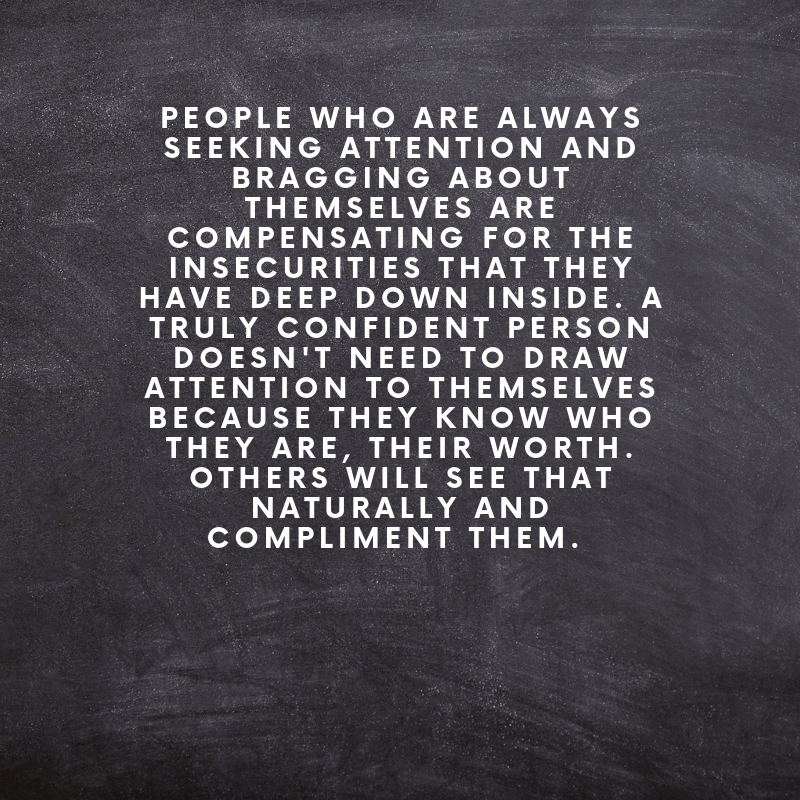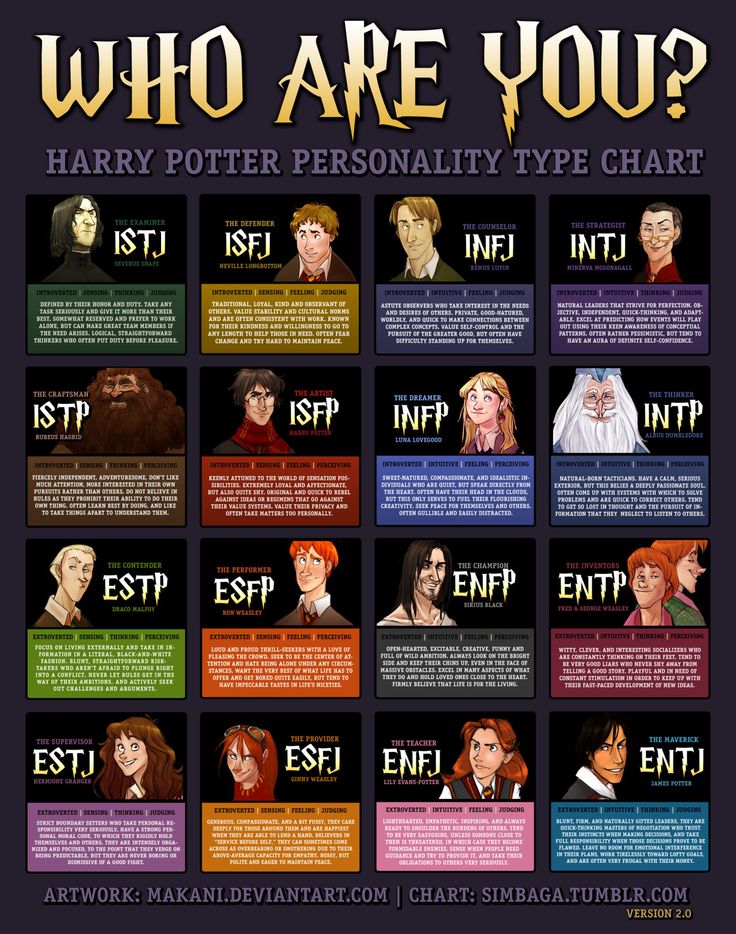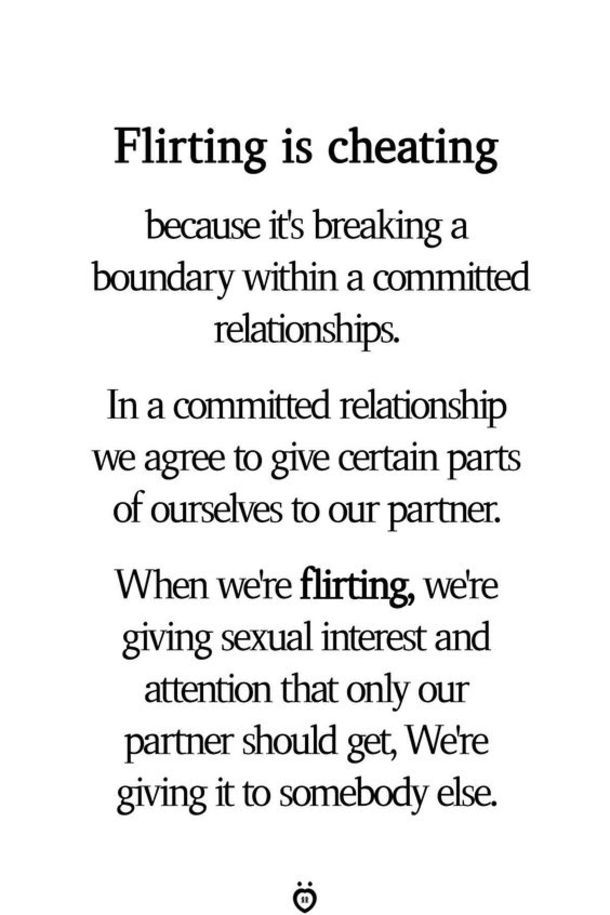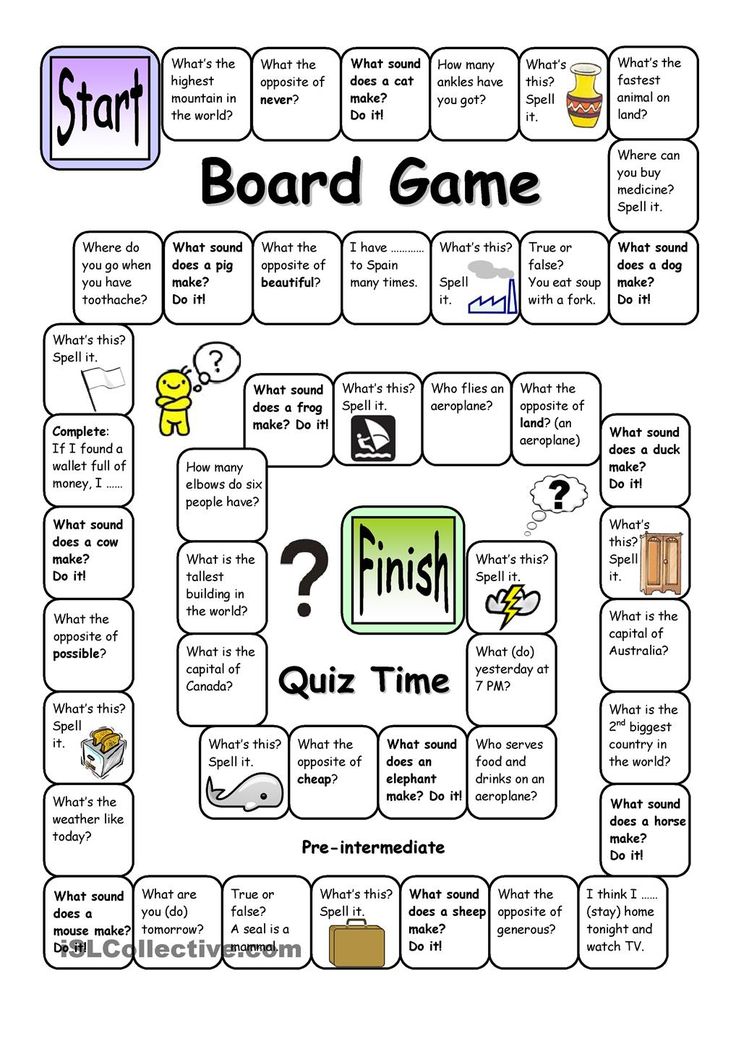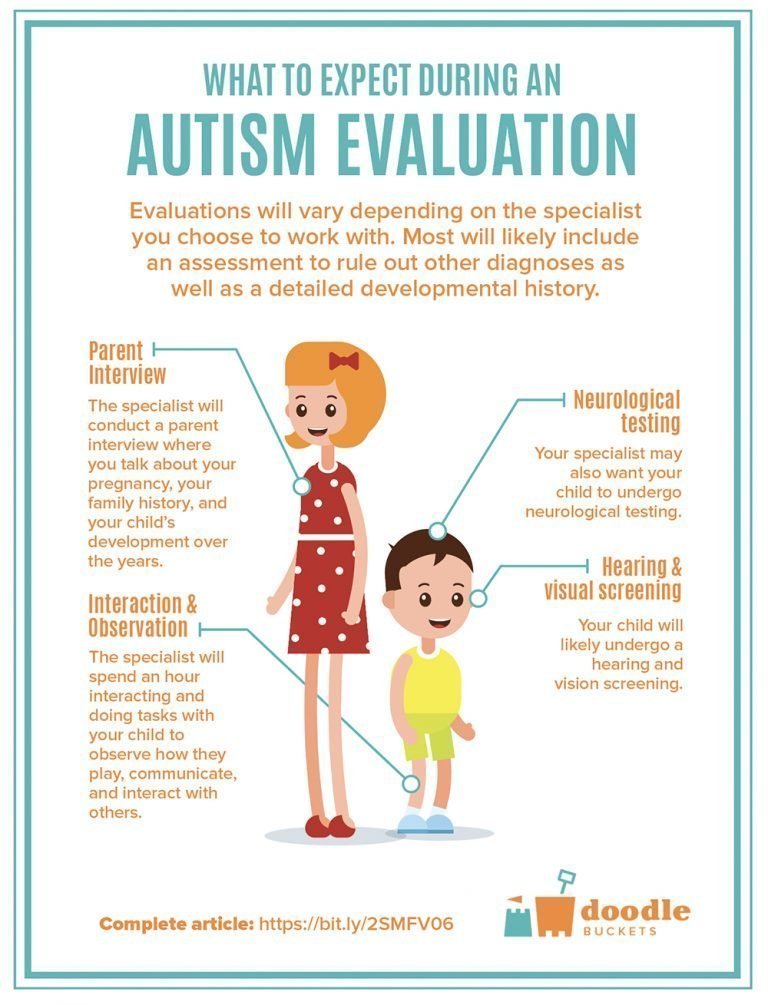What is attention seeking
Attention Seeking Behavior in Adults: Causes, Other Symptoms, More
For adults, attention-seeking behavior is a conscious or unconscious attempt to become the center of attention, sometimes to gain validation or admiration.
Attention-seeking behavior can include saying or doing something with the goal of getting the attention of a person or a group of people.
Examples of this behavior include:
- fishing for compliments by pointing out achievements and seeking validation
- being controversial to provoke a reaction
- exaggerating and embellishing stories to gain praise or sympathy
- pretending to be unable to do something so someone will teach, help, or watch the attempt to do it
Attention-seeking behavior may be driven by:
- jealousy
- low self-esteem
- loneliness
Sometimes attention-seeking behavior is the result of cluster B personality disorders, such as:
- histrionic personality disorder
- borderline personality disorder
- narcissistic personality disorder
Jealousy
Jealousy may come about when someone feels threatened by another person currently getting all the attention.
This, in turn, can lead to attention-seeking behavior to change the focus.
Self-esteem
Self-esteem is a broad term covering a variety of complex mental states involving how you view yourself.
When some people believe that they’re being overlooked, bringing back the lost attention is may feel like the only way to restore their balance.
The attention that they get from this behavior may help provide them with the feeling of reassurance that they are worthy.
Loneliness
According to the Health Resources and Services Administration, 1 in 5 Americans say they feel lonely or socially isolated.
Loneliness can result in an urge to seek attention, even in people who don’t normally exhibit attention-seeking behavior.
Histrionic personality disorder
According to the National Library of Medicine, histrionic personality disorder is characterized by feeling underappreciated when not the center of attention.
For someone to receive a diagnosis of histrionic personality disorder, they need to meet at least 5 of the following criteria:
- uncomfortable when not the center of attention
- provocative or seductive behavior
- shallow and shifting emotions
- using appearance to draw attention
- vague or impressionistic speech
- exaggerated or dramatic emotions
- is suggestible
- treating relationships as more intimate than they are
Borderline personality disorder
Borderline personality disorder is a continuing pattern of instability in self-image, interpersonal relationships, emotion, and impulsivity.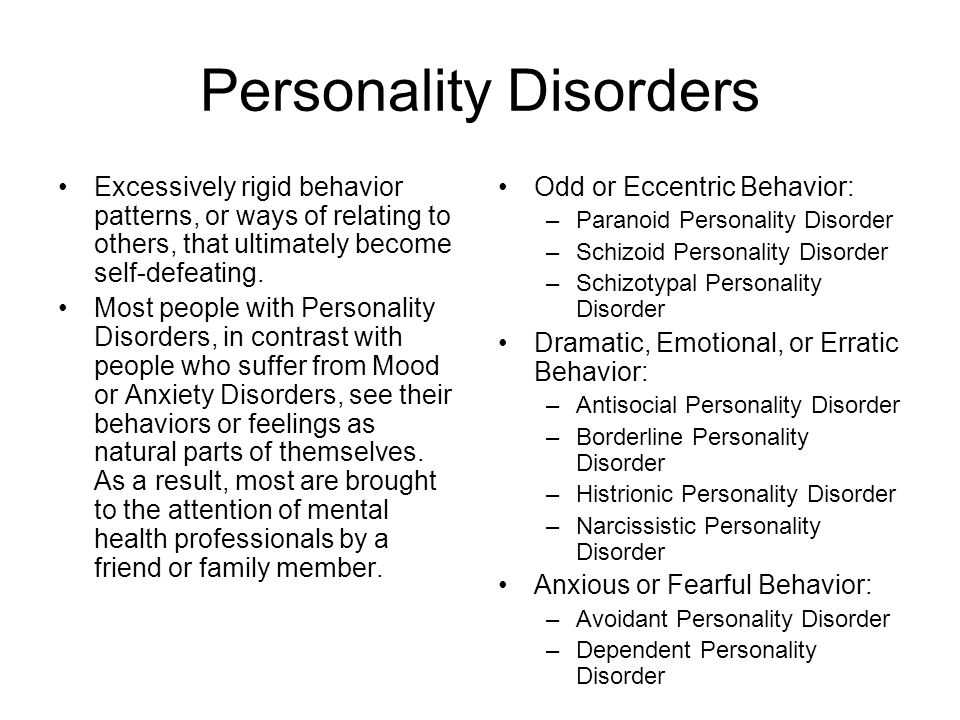
According to the National Institute of Mental Health, for someone to receive a diagnosis of borderline personality disorder, they need to display at least 5 of the following criteria:
- frantic efforts to avoid real or imagined abandonment
- a pattern of intense and unstable interpersonal relationships with extremes between devaluation and idealization
- a decidedly or persistently unstable self-image or sense of self
- engaging in potentially self-damaging, impulsive behavior
- recurring self-harm or suicidal behavior, including threats or gestures
- emotionally instability in daily reactions, such as through irritability, anxiety, or intense sadness
- chronic feelings of emptiness
- inappropriately intense anger that’s often difficult to control
- transient, stress-related paranoia or disassociation
Narcissistic personality disorder
Those with narcissistic personality disorder typically have a need for admiration with a lack of empathy.
According to the American Psychiatric Association, for someone to receive a diagnosis of narcissistic personality disorder, they need to display at least 5 of the following criteria:
- a grandiose sense of self-importance
- a preoccupation with fantasies of power, unlimited success, brilliance, ideal love, beauty
- a belief in their own uniqueness, especially that they should only associate with, and will only be understood by, high-status institutions and high-status people
- demand for excessive admiration
- a sense of entitlement and unreasonable expectation of favorable treatment or automatic compliance with their expectations
- taking advantage of others to achieve their own ends
- unwillingness to identify with or recognize the needs and feelings of others
- envy of others and belief that others are envious of them
- haughty, arrogant attitudes or behaviors
If you notice this behavior is constantly recurring, it’s probably best for the person display the behavior to visit an experienced mental health professional.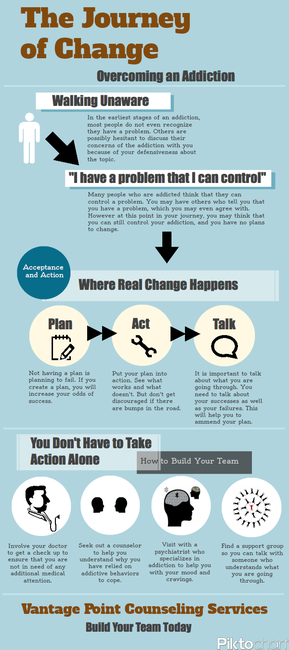
If left unchecked, attention-seeking behavior can often become manipulative or otherwise harmful.
Attention-seeking behavior may stem from jealousy, low self-esteem, loneliness, or as a result of a personality disorder.
If you notice this behavior in you or someone else, a mental health professional can provide diagnosis and treatment options.
Attention Seeking Behavior in Adults: Causes, Other Symptoms, More
For adults, attention-seeking behavior is a conscious or unconscious attempt to become the center of attention, sometimes to gain validation or admiration.
Attention-seeking behavior can include saying or doing something with the goal of getting the attention of a person or a group of people.
Examples of this behavior include:
- fishing for compliments by pointing out achievements and seeking validation
- being controversial to provoke a reaction
- exaggerating and embellishing stories to gain praise or sympathy
- pretending to be unable to do something so someone will teach, help, or watch the attempt to do it
Attention-seeking behavior may be driven by:
- jealousy
- low self-esteem
- loneliness
Sometimes attention-seeking behavior is the result of cluster B personality disorders, such as:
- histrionic personality disorder
- borderline personality disorder
- narcissistic personality disorder
Jealousy
Jealousy may come about when someone feels threatened by another person currently getting all the attention.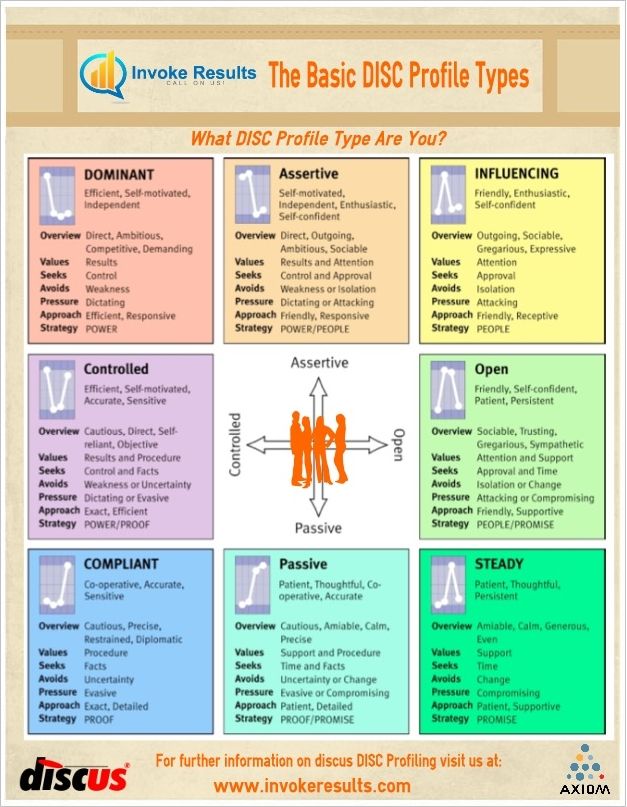
This, in turn, can lead to attention-seeking behavior to change the focus.
Self-esteem
Self-esteem is a broad term covering a variety of complex mental states involving how you view yourself.
When some people believe that they’re being overlooked, bringing back the lost attention is may feel like the only way to restore their balance.
The attention that they get from this behavior may help provide them with the feeling of reassurance that they are worthy.
Loneliness
According to the Health Resources and Services Administration, 1 in 5 Americans say they feel lonely or socially isolated.
Loneliness can result in an urge to seek attention, even in people who don’t normally exhibit attention-seeking behavior.
Histrionic personality disorder
According to the National Library of Medicine, histrionic personality disorder is characterized by feeling underappreciated when not the center of attention.
For someone to receive a diagnosis of histrionic personality disorder, they need to meet at least 5 of the following criteria:
- uncomfortable when not the center of attention
- provocative or seductive behavior
- shallow and shifting emotions
- using appearance to draw attention
- vague or impressionistic speech
- exaggerated or dramatic emotions
- is suggestible
- treating relationships as more intimate than they are
Borderline personality disorder
Borderline personality disorder is a continuing pattern of instability in self-image, interpersonal relationships, emotion, and impulsivity.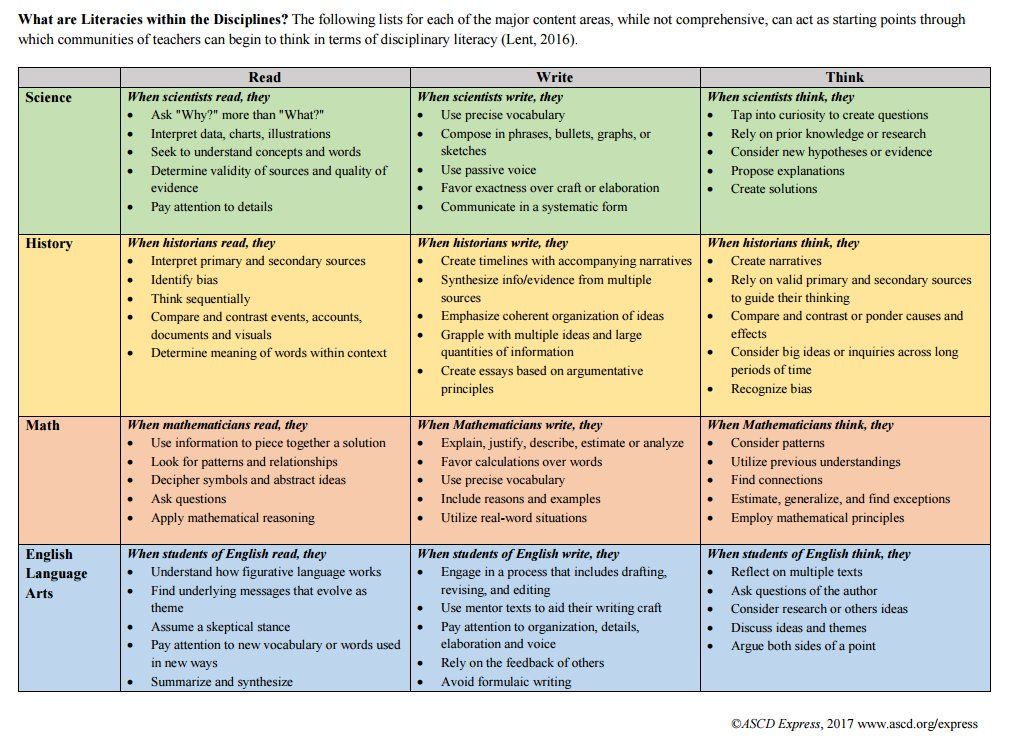
According to the National Institute of Mental Health, for someone to receive a diagnosis of borderline personality disorder, they need to display at least 5 of the following criteria:
- frantic efforts to avoid real or imagined abandonment
- a pattern of intense and unstable interpersonal relationships with extremes between devaluation and idealization
- a decidedly or persistently unstable self-image or sense of self
- engaging in potentially self-damaging, impulsive behavior
- recurring self-harm or suicidal behavior, including threats or gestures
- emotionally instability in daily reactions, such as through irritability, anxiety, or intense sadness
- chronic feelings of emptiness
- inappropriately intense anger that’s often difficult to control
- transient, stress-related paranoia or disassociation
Narcissistic personality disorder
Those with narcissistic personality disorder typically have a need for admiration with a lack of empathy.
According to the American Psychiatric Association, for someone to receive a diagnosis of narcissistic personality disorder, they need to display at least 5 of the following criteria:
- a grandiose sense of self-importance
- a preoccupation with fantasies of power, unlimited success, brilliance, ideal love, beauty
- a belief in their own uniqueness, especially that they should only associate with, and will only be understood by, high-status institutions and high-status people
- demand for excessive admiration
- a sense of entitlement and unreasonable expectation of favorable treatment or automatic compliance with their expectations
- taking advantage of others to achieve their own ends
- unwillingness to identify with or recognize the needs and feelings of others
- envy of others and belief that others are envious of them
- haughty, arrogant attitudes or behaviors
If you notice this behavior is constantly recurring, it’s probably best for the person display the behavior to visit an experienced mental health professional.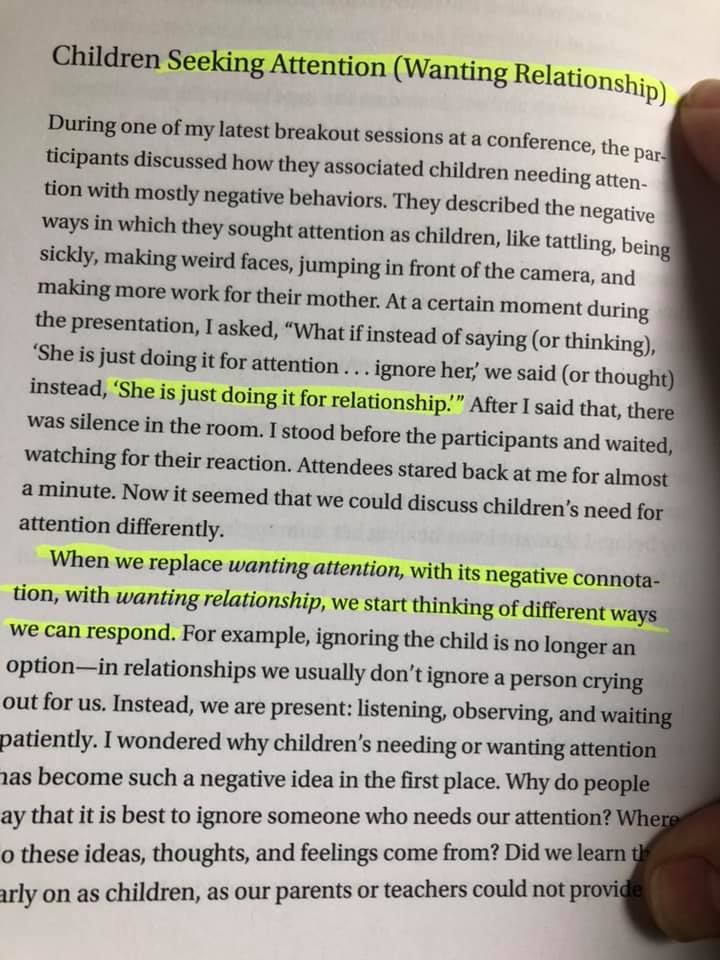
If left unchecked, attention-seeking behavior can often become manipulative or otherwise harmful.
Attention-seeking behavior may stem from jealousy, low self-esteem, loneliness, or as a result of a personality disorder.
If you notice this behavior in you or someone else, a mental health professional can provide diagnosis and treatment options.
Attracting attention. Psychology of an effective manager. Flexibility. Effective management. Psychology of a manager. Book 1. Management Situation
Attracting attention
First of all, before you start managing the “sales” process, you need to open the doors and windows to the client’s head, you need the film in the head not to jump and jump, but to be fixed (it’s hard to draw on paper if someone pulls it all the time) . The client has our assistant, who will allow the manager to open the door and fix the film, this assistant Attention. Hence the task of the manager, first to attract the attention of the client. How is very simple.
How is very simple.
Often there are situations when you ask someone to do something, but he does not seem to hear (for example, a colleague at work or a waiter in a cafe). Do not frighten the unconscious of a person with a request right away, especially in an offensive, aggressive or tedious tone. Call him, call out, preferably by name with notes, as if you want to give him a gift. This will surely attract his attention, he will respond. And then ask him not to get off.
? A man sold a donkey to a neighbor miller, praising his strength, endurance, obedience. The next day, the neighbor complains, saying that you deceived me, I harnessed the donkey, and he stands, does not move, does not listen to commands. They came to a neighbor, the man ran away and-and somehow gives the donkey a kick in the tail with the words: "Work, please." He immediately ran briskly, spun the mill. “Well, you see, neighbor, you just had to get his attention first.”
Attention is the focus, concentration of consciousness on an object or process of sensitive devices. What are these sensitive devices? These are the analyzers through which we perceive the surrounding world with varying degrees of adequacy. Why only with the degree of adequacy? Yes, because we are so arranged, for example, a wooden block cooled to -1 ° C seems to us much warmer than a metal rod cooled to only -5 C. The laws of physics provide this in an elementary way, but subjectively we feel that way. So, what sensitive analyzers are in service with a person? Of course, these are eyes - sight, ears - hearing, skin - touch, tongue - taste, nose - smell. Sometimes you want to believe that there is some kind of sixth sense, a super sense, the so-called extrasensory, let's believe in it.
What are these sensitive devices? These are the analyzers through which we perceive the surrounding world with varying degrees of adequacy. Why only with the degree of adequacy? Yes, because we are so arranged, for example, a wooden block cooled to -1 ° C seems to us much warmer than a metal rod cooled to only -5 C. The laws of physics provide this in an elementary way, but subjectively we feel that way. So, what sensitive analyzers are in service with a person? Of course, these are eyes - sight, ears - hearing, skin - touch, tongue - taste, nose - smell. Sometimes you want to believe that there is some kind of sixth sense, a super sense, the so-called extrasensory, let's believe in it.
To attract attention means feeding these analyzers, satisfying the need for these sensations, making oneself and the object of exchange (commodity) attractive. The manager can be handsome, neatly dressed in taste, in a beautifully decorated office, skillfully lit, if the product is objective, it can be bright, shiny, catchy or simply appropriate in type of colors for its functions, to please the buyer's eye.
A manager can have a nice subdued baritone. A voice caressing the client's ears with velvety rolls Clear diction, eloquent pauses of silence, listening. There is calming silence in the room, a slight harmony of live sounds or from a tape recorder, or vice versa - exciting, stimulating rhythms in accordance with the specifics of the institution.
The client can feel with pleasure the softness of the carpet under his feet, the comfort of the back of the chair, the magical attraction of the rough packaging, the light sliding smoothness of the polish, the warmth of the attention of a confident handshake, the grateful lightness of the touch that attracts attention ...
And the language of smells, the most ancient and forgotten us, is often much more important in communication than the language of words and gestures, formed millions of years ago in insects. Different smells stimulate our body in different ways. The smell of lemon, for example, increases efficiency and reduces stress. In England, it is sprayed on the subway during rush hours. An unobtrusive light pleasant smell makes us unconsciously strive towards the source. We are always drawn to look once again at the store where it smells good. Everything that can be used close to the nose can smell: telephone handsets, pages of books and magazines, pens and ink, collars of clothes, towels, combs and much more, I am already silent about what is related to cosmetics. In general, it would be great if everything smelled good. They say, for fun, there are pills, after taking which you are not ashamed to fart.
In England, it is sprayed on the subway during rush hours. An unobtrusive light pleasant smell makes us unconsciously strive towards the source. We are always drawn to look once again at the store where it smells good. Everything that can be used close to the nose can smell: telephone handsets, pages of books and magazines, pens and ink, collars of clothes, towels, combs and much more, I am already silent about what is related to cosmetics. In general, it would be great if everything smelled good. They say, for fun, there are pills, after taking which you are not ashamed to fart.
It is useful to drink coffee or tea with lemon during work breaks. From time immemorial, it was considered not just a sign of good taste, but, as it were, an integral attribute of the process of establishing good relations, how skillfully the treat was organized by art. Until now, many negotiations are concluded in cafes and restaurants, a presentation is not a presentation without an expensive, large, but tasty, unusual treat. Since childhood, we have been accustomed to demand to try berries, fruits, sausages at the market before buying, and good experienced sellers skillfully use this.
Since childhood, we have been accustomed to demand to try berries, fruits, sausages at the market before buying, and good experienced sellers skillfully use this.
A person reacts not only to direct sensations (the first signal system), but also to words, verbal images (the second signal system). How selectively you react to colors, smells, as well as an unequal attitude to what has been said form different words. The use of predicates preferred by the client, words reflecting sensory experience auditory (hearing), visual (sight), kinesthetic (touch), olfactory (smell) is a kind of key to turn on his attention and a code for the formation of illusions. More details about this can be found in the literature on NLP.
To be noticeable means to be different, different, unusual, different, or to do better, brighter than others. Everyone is standing, you are jumping, everyone is jumping, you are running, everyone is running, you are lying (from the experience of observing the crowd).
On the other hand, stimulate the imagination with mystery. Like dancing with veils. They unobtrusively envelop the body. What they reveal is exciting. What is hidden is interesting. Use the veils of the unfinished, the unsaid. You always have an appetite if you remain slightly hungry. One girl taught her friend: “Always show a man only one knee,” and every man knows from his own experience how effective this technique is.
One day a man joyfully met a dervish with the words:
- Why do I see you so rarely?
- Because the words "why I see you so rarely" are sweeter for me than the words "why did you come again," the dervish smiled.
Mula Jami. Cit. by Idries Shah "Caravan of Dreams"
But don't overdo it, especially if you're a mysterious girl. If a person, wanting to be interesting, cannot be a mystery, he tries to become an unsolvable problem (“shows one knee”, “dynamite”). If a man cannot open a door for a long time, he easily goes to where it opens faster. The point is not not to open, and not to open the gold behind the door, but that the door opens an interesting path to treasures full of amazing discoveries that can only be walked together. The mystery of a woman is in depth, not closeness. The secret is the nectar at the bottom of the vessel, not the cork.
The point is not not to open, and not to open the gold behind the door, but that the door opens an interesting path to treasures full of amazing discoveries that can only be walked together. The mystery of a woman is in depth, not closeness. The secret is the nectar at the bottom of the vessel, not the cork.
Remember, attracting attention is not an end in itself. The objects of attention should not distract from the main goal, from the main subject of sale, but lead to it. We are more likely to look for those from whom we can benefit, it is more expedient, easier and more efficient to look for those who may be interested in benefiting from us.
In the following chapters we will consider the basic homeostatic needs of a purposeful system. In accordance with them, both animals and humans attract attention:
• dangerous, as in a joke, why everything that is very pleasant is either indecent or harmful to health”;
• unusual;
• desired.
One girl complained that her boyfriend began to hang out in porn sites cooled off her, and expressed concern about his possible betrayal.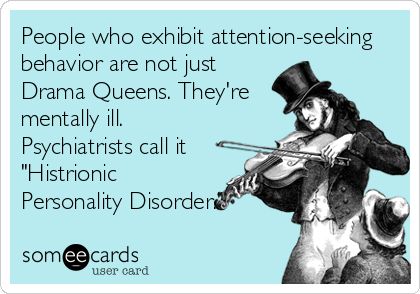 I suggested that she, if not with him, then climb there herself and take a closer look at what attracts him, what topics, looks, manners, styles, roles, images, try to take his place and see yourself from these positions, and it’s also useful to know what he reads, what films he watches, what news he is interested in... The decision, as a rule, easily comes to mind. A week later, I did not recognize her myself and noted with pleasure that I could still succumb to the charms.
I suggested that she, if not with him, then climb there herself and take a closer look at what attracts him, what topics, looks, manners, styles, roles, images, try to take his place and see yourself from these positions, and it’s also useful to know what he reads, what films he watches, what news he is interested in... The decision, as a rule, easily comes to mind. A week later, I did not recognize her myself and noted with pleasure that I could still succumb to the charms.
This text is an introductory fragment.
5.8. Stage Direction #1: Generating Brand Attention and Creating Demand
5.8. Stage 1 Stage Direction: Building Brand Attention and Creating Demand At the first stage, we are faced with the task of developing a selling idea and on its basis to carry out the task of paramount importance: to attract the attention of target consumers to the product and create
Attracting attention
To attract attention First of all, before you start managing the “sales” process, you need to open the doors and windows to the client’s head, you need the film in the head not to jump and jump, but to be fixed (it’s hard to draw on paper if someone pulls it all the time). U
U
Attention
Concentration of attention From the very beginning of the meeting, it would be prudent to remind people of its goals. This will help steer the discussion in the right direction immediately. • Clearly describe the current situation or problem. For example: “Our staff has increased significantly,
Subcontracting
Involvement of subcontractors The essence of the event is the involvement of third-party organizations to perform certain work in the project. It is used in case of changes in the requirements for the final product by the customer. Is in the area of unwanted losses, since the costs,
Customer Acquisition
Customer acquisition In this part, we will focus on the tools and techniques that will help you win new customers.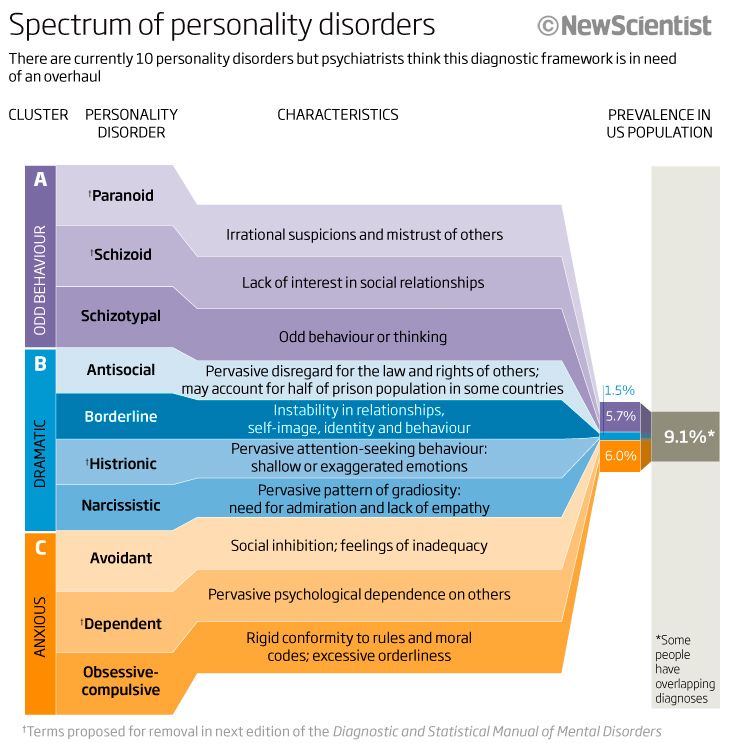 You are unlikely to find such lessons in traditional textbooks and sales periodicals, and the main reason is this: we are
You are unlikely to find such lessons in traditional textbooks and sales periodicals, and the main reason is this: we are
Lack of attention
Lack of attention Along with the excessive involvement of the manager in the work of a subordinate, the opposite problem is no less common - lack of interest. For those who are not naturally independent in setting goals and motivation - in English
Attraction
attraction Access to the object of recruitment development The most effective option is to find common ground. Let us list the main points of contact used in intelligence practice.1. Exit through "mutual acquaintances" The most common ways:?
Switching attention
Switching attention This technique assumes that you take the initiative when making a deal. The method consists in distracting the thoughts of buyers from making a decision and switching their attention to the idea of owning a product (service) and related to this possession
The method consists in distracting the thoughts of buyers from making a decision and switching their attention to the idea of owning a product (service) and related to this possession
6.3. Attracting candidates
6.3. Attracting candidates 6.3.1. Determining if a job actually exists Vacancies arise mainly for two reasons. Either this is due to the expansion and development of the company (development of new products, entry into new markets, conclusion of new contracts),
Attracting candidates
Attracting candidates Does the vacancy really exist? Vacancies arise mainly for two reasons: either due to the expansion and development of the company (development of new products, entering new markets, new contracts), or due to the dismissal of
6 signs when attracting attention is manipulation ~ Volnodum
by Pavel
Attracting attention can be a form of mental disorder.
 In addition, such behavior can also be a method of manipulation.
In addition, such behavior can also be a method of manipulation. We all need a moment of drama, don't we? This allows you to revive the routine and monotonous everyday life. But if your whole life is an endless series of dramatic ups and downs with no solid ground under your feet, then you should stop, evaluate your life and understand why you actually need this attention. Perhaps in this case, attracting attention is an unconscious attempt to manipulate others.
Many of us will say that we love being in the middle of it. However, if attention-grabbing becomes a life stance and you find yourself consciously engaging in melodramatic behavior, these may be signs of a manipulative urge.
An emotionally mature person is aware of self-sufficiency by default. This is important for maintaining self-confidence in all everyday situations. People with low self-esteem, on the other hand, tend to create situations where the result will be the feedback that is so important to them.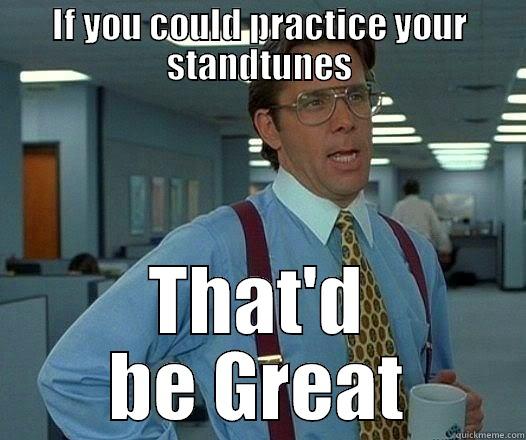
So, how is attracting attention used for manipulative purposes?
We will give below types of attention and corresponding behavior .
-
Hysterical behavior
In typical manifestations, this behavior is characterized by random outbursts of emotions on everything and everyone. Such reactions are exaggerated, usually melodramatic and noisy. A hysterical person breaks down at the slightest provocation and falls out of a life situation.
This behavior is used as a method of manipulation because it focuses attention on the hysterical person. He gets everything he needs. Some of it has to do with low self-esteem.
-
Playing the victim
Do you know someone who is incredibly unhappy in life? This is not about a person who has suffered from a crime or a terrible event in life - about who uses the status of a victim to put himself above other .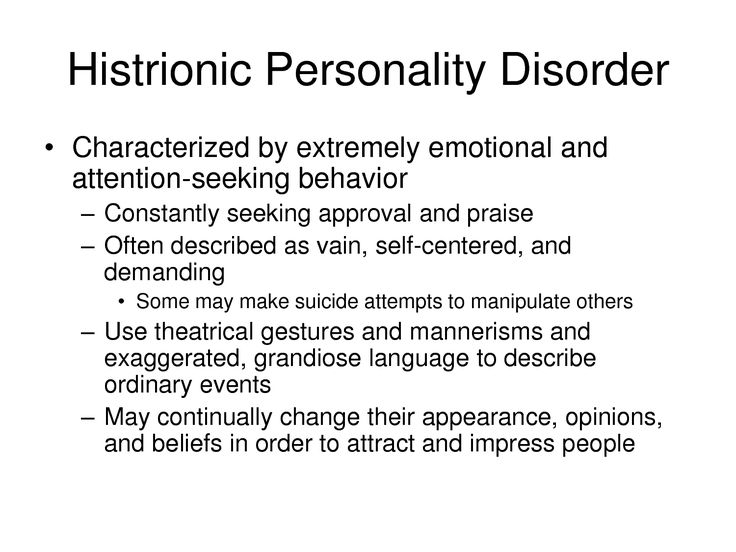 Such a person will perceive all negative experiences as part of something terrible directed at him. If the current problem is solved - be sure that the victim will soon have new ones.
Such a person will perceive all negative experiences as part of something terrible directed at him. If the current problem is solved - be sure that the victim will soon have new ones.
By manipulating the game of victimhood to draw attention to oneself, a person draws energy from others and uses the sympathy of others as an obstacle to the truth about them.
-
An irreplaceable friend
People of this type hunt for vulnerable people, literally embedding themselves into other people's lives. That is, they become indispensable to those around them to such an extent that they become a “special” friend to those people, and bask in the glory of this status. As the vulnerable person relies more and more on the manipulator, so too do the prospects for exploitation of the former. If a vulnerable person manages to break free, an irreplaceable friend is greatly offended.
This manipulative technique works like this: the one who seeks attention increases self-esteem by making himself an important person.
-
Munchausen's syndrome
Known psychological disorder with frightening overtones. A person who suffers from this disease harms another in one way or another, after which he acts as a savior at the last moment. Attracting attention here is in the fame and "superhero" status that a person gets after the so-called resolution of the situation. In particular, mothers who work as nurses or firefighters often succumb to this; the problem is generally associated with people in professions that involve taking responsibility for other people.
This is a very worrying manifestation of the problem, as it can lead to fatal consequences. But if attracting attention rules a person, syndrome is addictive . The attention that a person receives when they are close to a situation is exactly what they need throughout their lives.
-
Always ill
Another form is to feign illness or to play with an existing illness . From a very young age, a child knows that when he hurts himself, when he hurts himself, he usually receives a calming response from his parents. Sometimes there are cases when people deliberately inflicted serious injuries on themselves in order to attract attention. It should be understood at the same time that it is important to feel sorry for and reassure other people in difficult moments. For some, this kind of attention is crucial at important moments.
From a very young age, a child knows that when he hurts himself, when he hurts himself, he usually receives a calming response from his parents. Sometimes there are cases when people deliberately inflicted serious injuries on themselves in order to attract attention. It should be understood at the same time that it is important to feel sorry for and reassure other people in difficult moments. For some, this kind of attention is crucial at important moments.
The need for sympathy is almost the same as the attraction of attention. Therefore, for a person who is more an introvert than an extrovert, tantrums for the sake of what they want are not suitable - only more subtle means are used. He will rather feign illness so that others are in the right position in front of him.
-
Working bee
Do you have a friend who seems the busiest person on the planet ? The one who, regardless of the number of tasks, is always busy? A person with no free time who dreams of a life as easy as yours?
Attracting attention in this form has a direct passive-aggressive background: "I'm much more important than you, because I'm busier than you" .